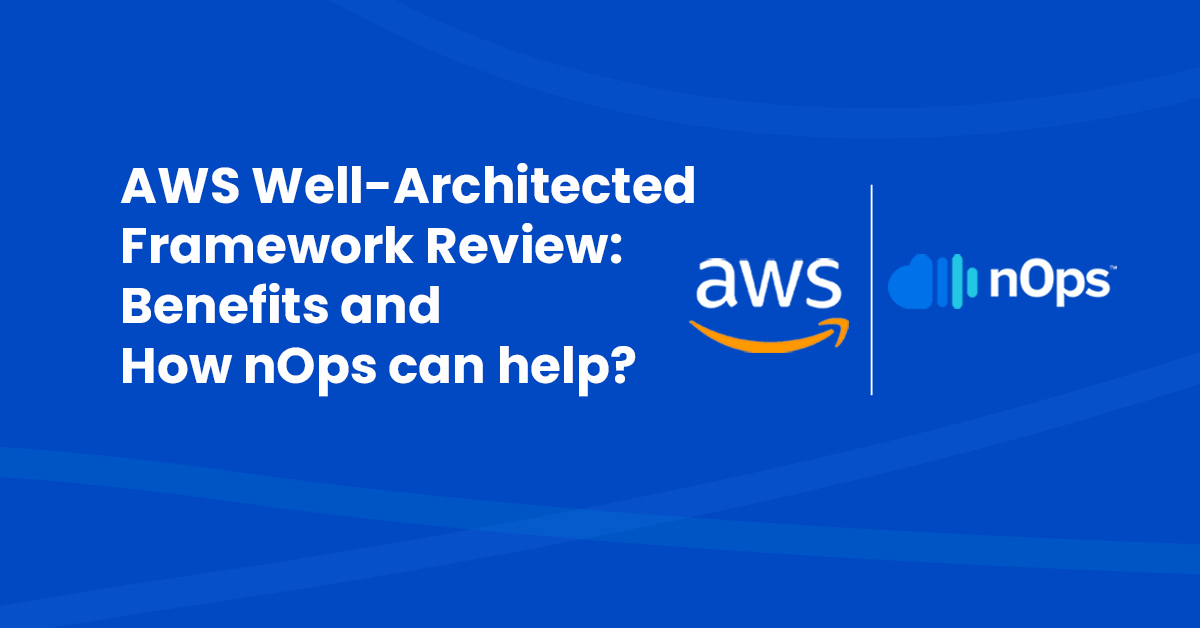As organizations begin to embrace the cloud, they are increasingly turning to Amazon Web Services (AWS) for their cloud needs. AWS provides extensive services, tools, and features to help organizations take advantage of the cloud’s scalability, flexibility, and cost savings. However, with all the features and options available, it can be difficult to understand and utilize them effectively.
That’s where the AWS Well-Architected Framework (WAFR) comes in. The framework provides guidance on best practices for building and running secure, reliable, and cost-efficient applications on AWS. AWS Well-Architected provides a consistent approach for customers and partners to evaluate architectures and implement designs that can scale over time. The AWS Well-Architected Framework (WAFR) is a set of best practices and guidelines that enable organizations to build and operate applications and infrastructure on the Amazon Web Services (AWS) cloud.
In this blog, we will discuss the AWS Well-Architected Framework, its benefits, and how to use it to review your existing architecture and optimize your cloud resources. We’ll also cover the use cases of WAFR and the steps involved in the review process.
What is AWS Well-Architected Framework?
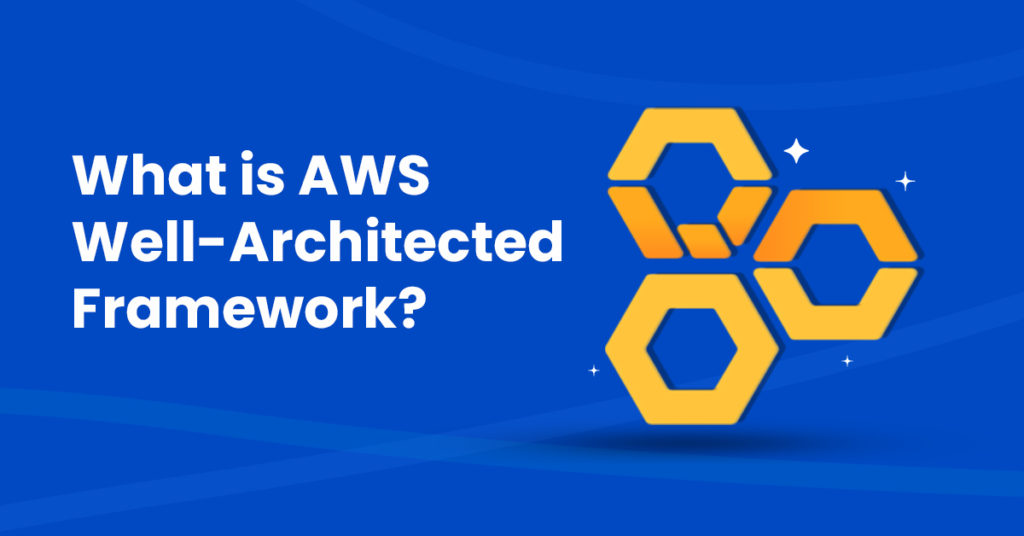
The AWS Well-Architected Framework is a set of best practices that Amazon recommends for building and operating secure, reliable, efficient, and cost-effective systems in the cloud. It is based on six pillars that are essential to a successful cloud architecture: Operational Excellence, Security, Reliability, Performance Efficiency, Cost Optimization, and Sustainability.
It is designed to help organizations identify common pitfalls, create a secure and reliable architecture, and improve the overall performance of their systems. WAFR is an invaluable resource for architects and developers building applications on the AWS platform.
The framework provides a consistent set of criteria for evaluating architectures and system designs.
What are the Benefits of AWS WAFR?
The AWS Well-Architected Framework helps in optimizing cloud resources and reducing operational costs. It also helps organizations identify common pitfalls and make architectural decisions that are aligned with the organization’s goals and objectives. Here are some of the key benefits of using the framework:
- Security and Reliability: One of the primary benefits of AWS WAFR is that it helps organizations build secure and reliable applications. The framework provides guidance on how to design best and implement applications in order to minimize security risks and ensure reliability. It also recommends implementing secure identity and access management, encryption, and network security.
- Cost and Performance Optimization: Another benefit of AWS WAFR is that it helps organizations optimize their architecture for cost and performance. It provides guidance on designing and implementing applications to ensure they are cost-effective and meet performance requirements. It also provides recommendations on utilizing AWS services such as Amazon CloudFront, Amazon CloudWatch, and Amazon Elastic Compute Cloud (EC2).
- Automate Operation Processes: AWS WAFR also helps organizations automate operational processes. It provides guidance on using AWS services such as AWS Identity and Access Management (IAM), AWS Config, and AWS CloudFormation to automate operational processes. This automation can help organizations reduce operational costs and ensure their applications remain up-to-date and secure.
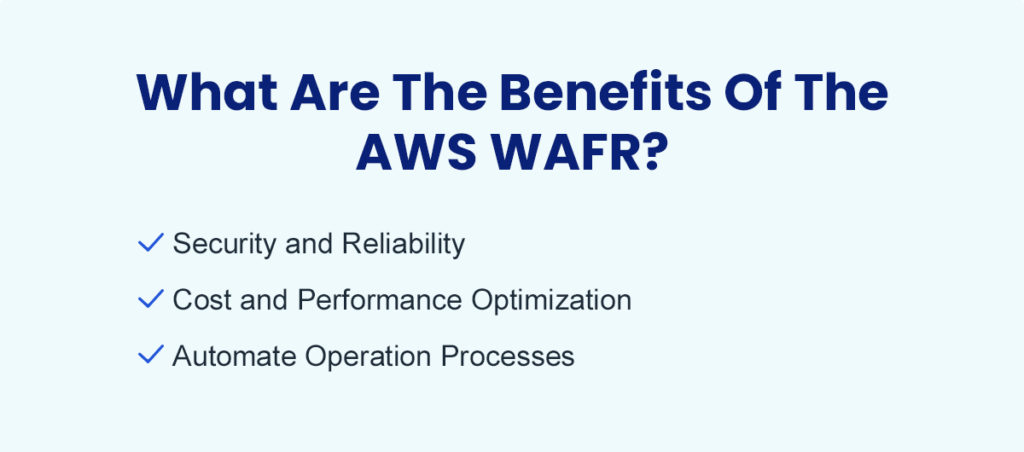
How can nOps ease out the WAFR Review?
Organizations can complete the review process manually, but it can be time-consuming and complex. This is where nOps can help. nOps saves clients and Partners painstaking hours of sifting through data to accomplish this task. Periodically, it’s essential to have a complete well-architected assessment. nOps integrates with the well-architected tool. We automatically map the questions with well-architected findings.
Here’s how nOps offers pre-defined rules for the assessment:
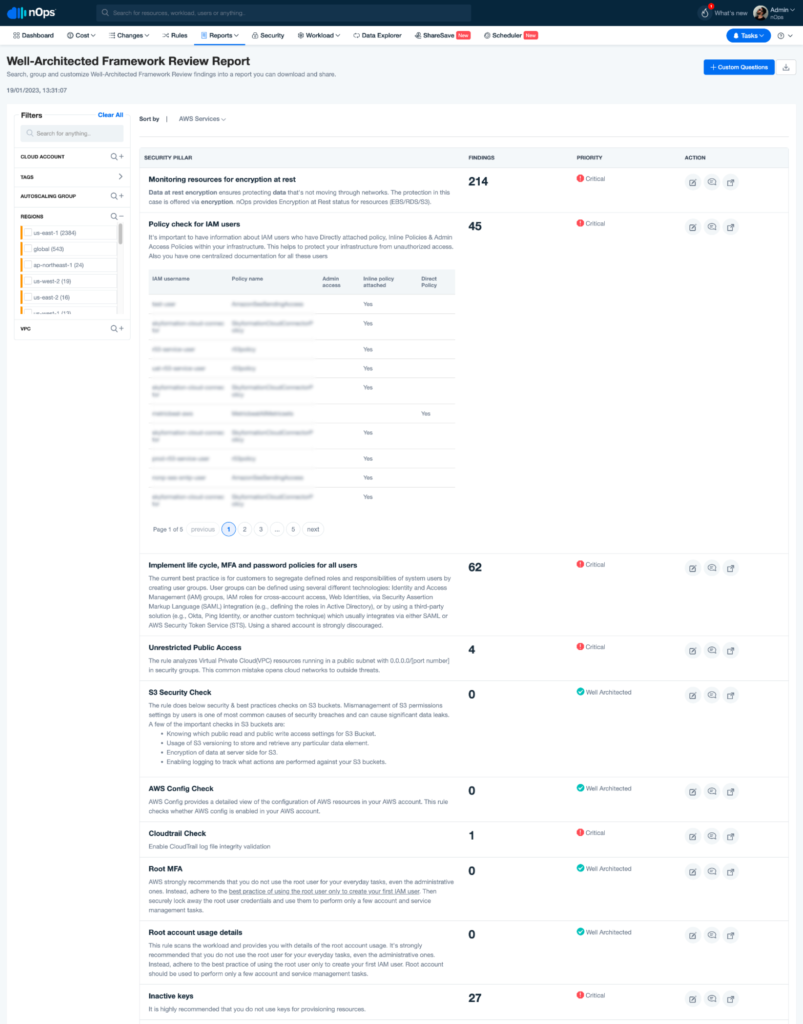
- Identity and access management (IAM)
- Root MFA – nOps rule
- The user without MFA – nOps rule
- Inactive keys – nOps rule
- Policies attached directly to IAM – nOps rule
- Infrastructure protection
- Resource running in a public subnet – nOps rule
- EC2-Classic VPC resource check
- AWS Web Application Firewall (AWS WAF)
- Data protection
- Encryption for data at rest – nOps rule
- Public read and write S3 buckets – nOps rule
- Detective controls
- AWS CloudTrail monitoring – nOps rule
- Incident response
- Have a clean room. A new, trusted environment where you can conduct a deeper investigation before the root cause has been identified and the incident has been contained.
- Assess root cause with an instant view of changes to your infrastructure with a detailed audit trail – nOps change management and lightweight CR
- Tagging – ensure there is tagging to identify resources, owners, and administrators – nOps rule.
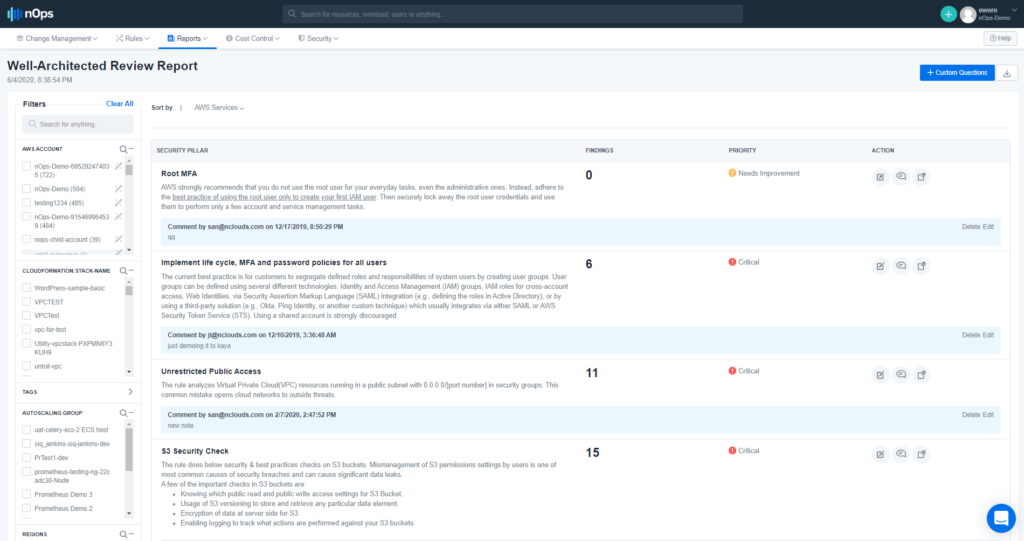
You can read more about this at: Using the AWS Well-Architected Framework to Support DevSecOps.
- nOps automates the process of collecting and analyzing data, identifying potential issues, and providing recommendations to improve your AWS environment.
- nOps helps improve the speed and accuracy of AWS WAFR reviews by making it easier to identify potential issues and make recommendations for improvements.
- It also provides detailed reports that can be used to track progress and verify that the architecture meets the framework’s standards.
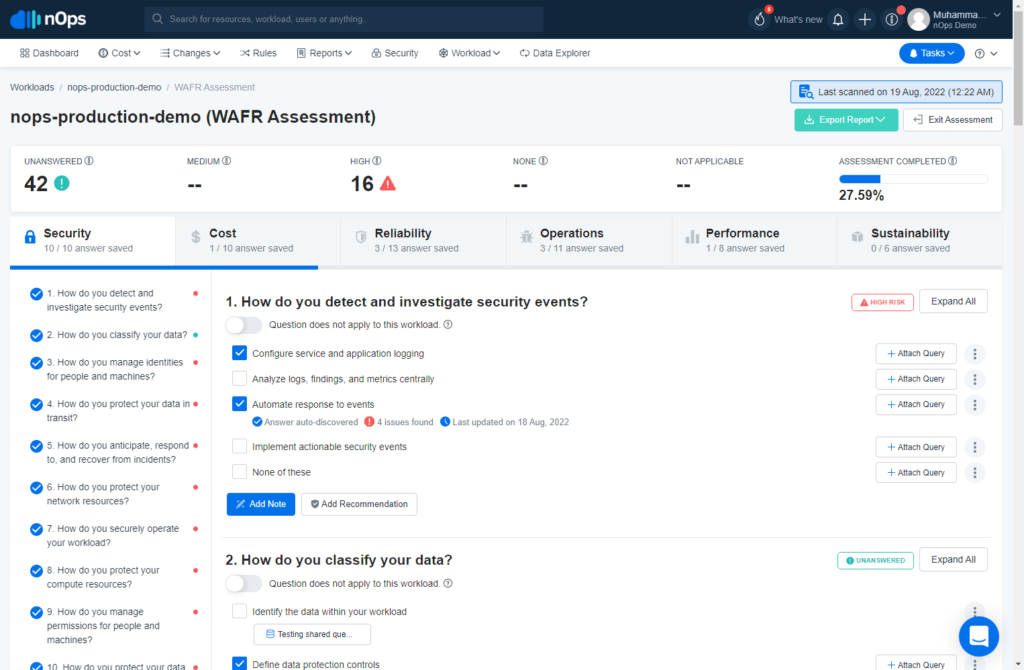
If you would like to understand WAFR better: here’s JT Giri – Founder and CEO of nOps, explaining the needful:
- Get Well-Architected for Continuous Compliance and DevSecOps
- How to run an AWS Well-Architected assessment using nOps
- Using nOps to Conduct AWS Well-Architected Reviews
Overall, nOps can help make AWS WAFR reviews faster and more accurate. With its ability to automate the review process and provide detailed reports, organizations can quickly identify and address any potential issues in their AWS environment. This ensures that their cloud infrastructure meets the standards of the WAFR and is optimized for cost efficiency and performance. Here’s a case study on big brands using nOps for AWS WAFR – iOLAP & Dickey’s Barbecue Pit use nOps to get and stay Well-Architected.

